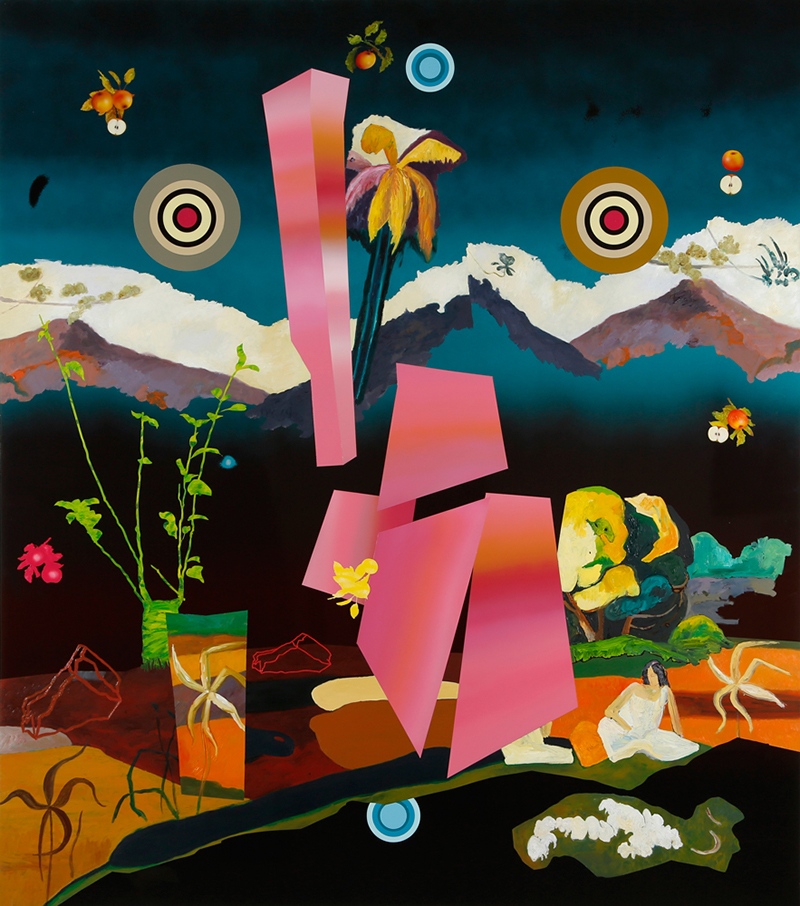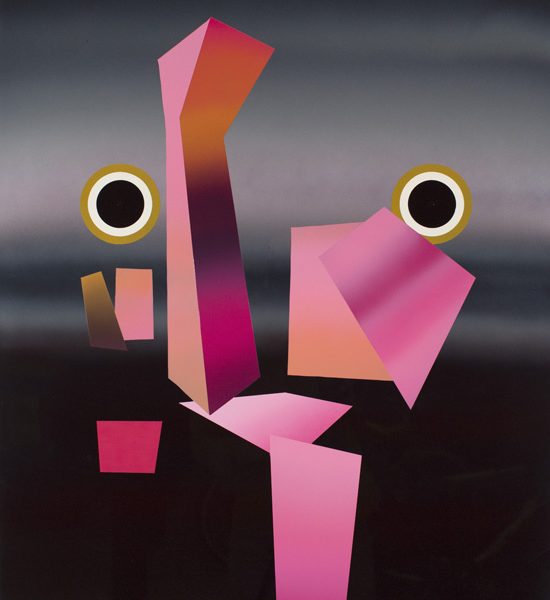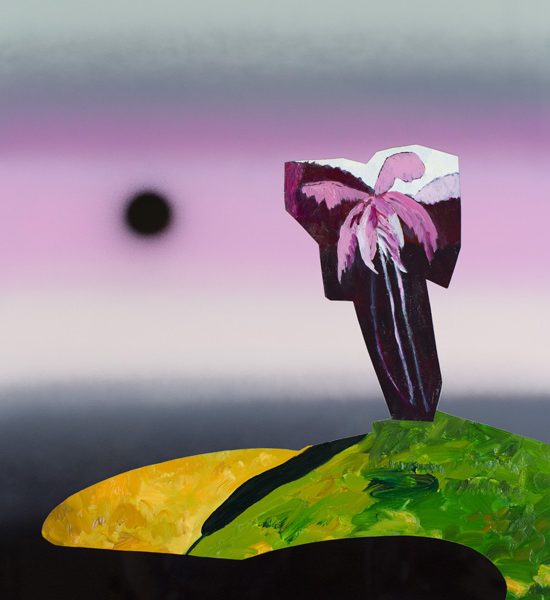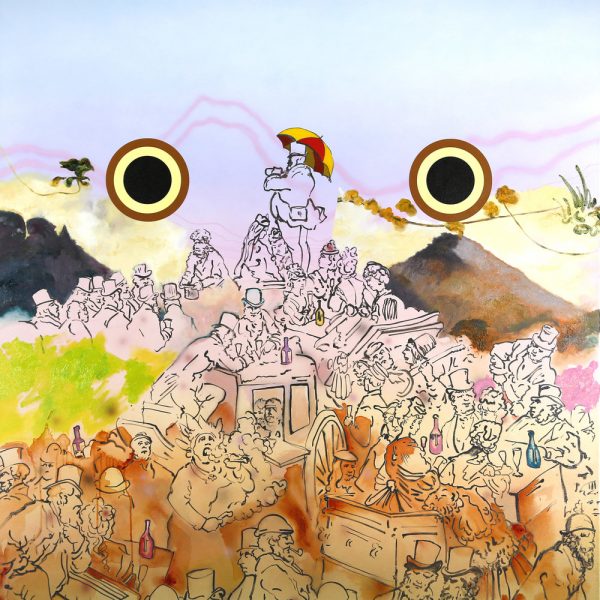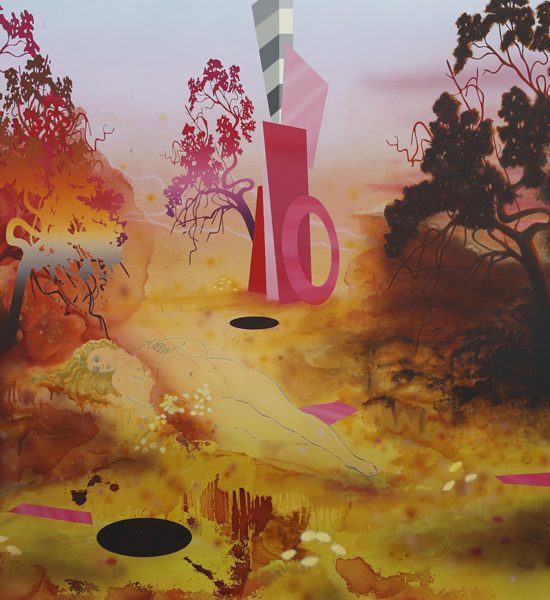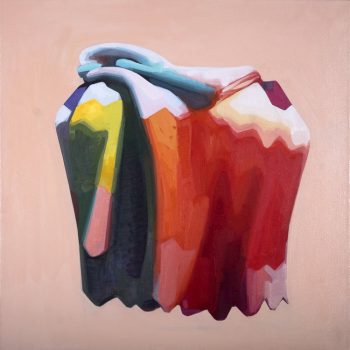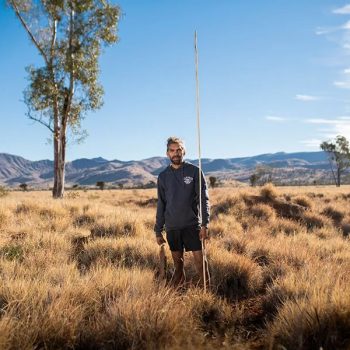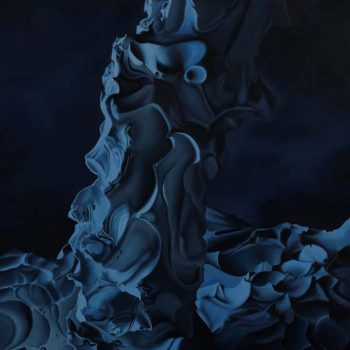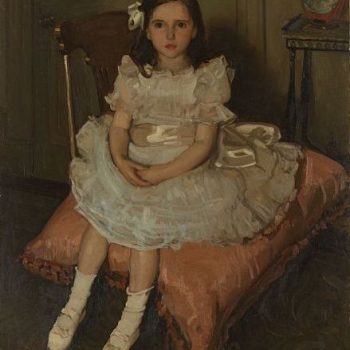NEIL HADDON
UNTIL 7 DECEMBER 2019
Using the quote below as a starting point, the brief article following provides some insights and observations on the nature of Tasmanian artist Neil Haddon’s 2016 / 2017 work: in particular the nature of ‘building realities’, viewer interpretation of the text and associated poetic qualities derived in part from his experience as a new immigrant.
Bett Gallery said of Neil Haddon’s exhibition anecdote / shift / mirror in 2017: recent paintings draw on his experience as a migrant to Tasmania and the ways that migrants find their own poetic meaning in the unfamiliar contexts of a new home.
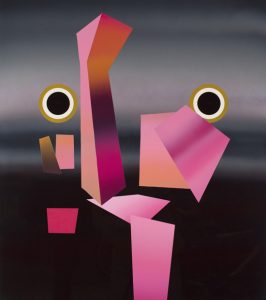
There are many ways Neil Haddon’s work can be interpreted, one of them, (implied in various titles plus the ‘unconnected randomness’ of the separate elements which comprise individual works), is that of constructing reality(s) from the experience of being an immigrant in a new country. The body of work additionally speaks to the malleability of the various realities in which we exist generally.
Meanwhile, realities out there to negotiate are potentially infinite, and they are in a perpetual state of change and evolution. (Terry Eagleton discusses ‘reality’ in Literary Theory – An Introduction {2nd Edition 1993}, noting, there is not a single immutable reality we exist within.)
We can and do build and shape alternate worlds simultaneously, for instance, we draw on different aspects of our lives to counter adverse experiences and circumstances. Conversely, many of us determine ways and means of making our realities more meaningful and promising.
Many of Haddon’s titles comment obliquely or actually on ‘constructing spheres of existence’. We do that (consciously or not) from a plethora of different elements which define us in some way: aspirationally, culturally, ideologically, educationally, socially and so on. When put together they create a new set of situations, or another ‘fluid’ microcosm of our lives which then sits along side, yet intersects with other social worlds we have built, much like a jigsaw puzzle.
_________________________________________________________
BETT GALLERY
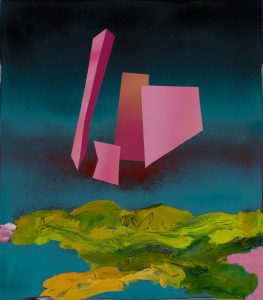
Haddon employs a collage-like approach to painting, using a variety of seemingly incongruous sources. Collage is interpreted broadly as the combination of different things to make a new whole.
Haddon proposes that collage can be understood as movement and relocation, fragmentation and recombination, slippage in meaning and innovative translation.
In these paintings, meaning is in flux and is renegotiated according to the diverse cultural influences of where we come from and where we find ourselves now. The viewer is free to consider how meaning is made when the supporting contexts for that imagery are strange to us.
In the aforementioned Literary Theory – An Introduction, Eagleton explains (discussed and endorsed by many theorists in the present day, such as Tom Nicholas, PhD at University of Exeter and Masood Raja, Associate Professor in Postcolonial literature and theory at University of North Texas), the work of Jacques Derrida (Of Grammartology, 1967) and Roland Barthes (The Death of the Author, 1967) to name just two.
Meaning is generated by the viewer and as such interpretations of an artwork will differ accordingly. Moreover, Derrida’s ‘deconstruction theory’ asserts that meaning is not ‘fixed’ because (when ‘reading between the lines’ of a text, if you like) there are hidden ‘traces’ of meaning to be found throughout: all words and texts contain residual traces of other words or texts, contexts. In Themes of Contemporary Art: Visual Art After 1980 Jean Robertson and Craig McDaniel summarise the key elements of Deconstruction.
What poststructuralism added to the mix was the concept that the underlying structure of a language or any other symbolic system is not fixed and permanent.
‘Deconstruction’ may uncover alternate cultural and social positions which are ‘not spelled out’ but are inherent in the language or discourse nevertheless. It is impossible to absolutely ‘pin down’ the meaning of a word, text, artwork etc.
A dictionary explains this idea well; if you look up a word, you are then referred to more words, which you look up, those words refer you to still more words. Meaning is fluid; ‘slippage’ occurs in and around the word because no word means ‘one thing finally’, meaning is generated both by ‘what that word is not’ and potentially ‘infinite contexts’. As language evolves so do the contexts for its usage.
Therefore, understanding Haddon’s work (or any other artist) is dependent on the respective contexts (some entirely unique and others shared) the viewer brings to bear, and the hidden traces of meaning inherent in the ‘text’ itself. This means any ‘one meaning’ is negotiable as is the authors intention.
Deconstruction looks at a text or symbolic system in terms of the underlying worldview that gave rise to it, exposing contradictions and hidden biases in order to challenge the validity of the world view as well as the text.
That is not to say an artwork ‘can mean anything at all’, one reason for this is that the artwork has ‘itself been produced within certain contexts’ by the artist, among them, historic location, education, nationality, ideology (conscious or not), social networks, state of mind, resources at their disposal and so on.
The work may offer indicators but not any ‘one truth’, the author’s intention, or definitive answers.
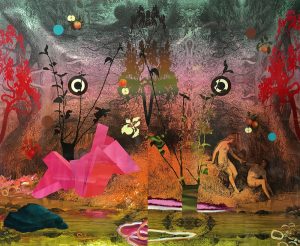
A good example are the ‘targets’ contained in Haddon’s work: different people with different experiences will interpret them in myriad ways.
Some viewers might see them positively – targets reached, goals attained, or ‘on target’ to achieve a certain personal outcome. Or, something simple like a happy family remembrance when playing darts at Christmas time.
Alternatively, for a soldier within the context of war, a ‘target’ might have negative connotations, be they ideological, in the field of war itself, positions of the enemy etc. For a viewer looking at these works, they might also indicate the ‘non-achievement’ of a personal goal and thus have negative implications.
Haddon may also be referencing other artist’s who employ the ‘target’ in their work, such as Jasper Johns. A bull’s eye generally serves as a means of attracting and focusing the eye; thus, it is an apt, if provocative motif for a work of art, since most paintings and sculptures are also inert objects made for the purpose of being seen.
We will bring our own trees was selected for the Sunshine Coast Art Prize, 2019 at the Caloundra Regional Gallery
________________________________________________________
The paintings are made with a variety of materials and processes bringing together fragments of artworks by Gustave Doré, Paul Gauguín and John Glover in abstracted constructions…
…to picture a state of flux where significance and association are perpetually renegotiated according to the influences of an old place and the new place.
Scroll to end of article for more information on Gauguin, Doré, Glover.

_________________________________________________________
________________________________________________________
…experience as a migrant to Tasmania and the ways that migrants find their own poetic meaning in the unfamiliar contexts of a new home.

Changes in the status quo, such as Neil Haddon’s experience as a migrant to Tasmania, force new predicaments which correspondingly compel new ways of existing. Inevitably changes in known dialogues, social positions, future developments, interactions and a host of other social and cultural factors will be required.
To some extent, all negatives have a positive aspect (and vice versa) and although these works are somewhat abstruse, they seem positive and hopeful, in spite of the attached’s title and the strident state of flux. It is also a later work from 2018/2019.
Whilst the title, No prospect, no refuge is decidely negative, like the earlier works pictured here, the imagery suggests both an inherently holistic approach, and that reality is not ‘static’, reality(s) is ceaselessly modifying, and can never be quite the same for any two people. Two people may have almost identical experiences yet see them in entirely different ways; one negative and the other positive.
Implicit in this work is a sense of darkness and light, there are peaks and troughs, as though life can’t always ‘come up roses’, yet the countless references indicate that all options are on the table, and perhaps impel us to consider everything in a new light.
_________________________________________________________
A sense of the poetic in Neil Haddon’s work
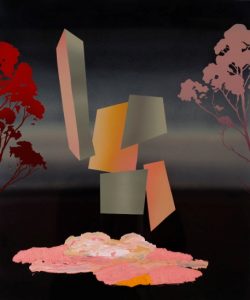
In the first paragraph Bett Gallery mentions the ways that migrants find their own poetic meaning in unfamiliar contexts; in some way the works shown here demonstrate those contexts. The work is essentially poetic in that it is compact and disjunctively complex, bringing together a surfeit of ‘unrelated’ elements in dramatic ways. At the same time it is lyrical, colourful and dense. The ‘interior worlds’ project both known and unknown aspects within indeterminate contexts. Abstract and figurative components occupy the space non=contextually, suggesting the unconsciousness at play; different elements tumble, interweave and jostle, not unlike a ‘stream of consciousness’ unfolding.
Whilst these works may indicate that making the transition to a new country is not easy; Haddon’s ‘inchoate realities’ symbolise both negative and positive situations (or degrees of darkness and enlightenment).
Overall they appear buoyant by dint of the formal and rhythmical beauty, which additionally, makes them emotionally rich and vibrant.
________________________________________________________
NATIONAL GALLERY VICTORIA (NGV)
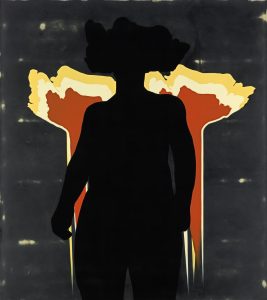
The attached work is in the collection of the NGV.
Bec Tudor commented on Vestigial (40) in Artlink Magazine when exhibited in Stranded 2007:
Neil Haddon’s solo exhibition ‘Stranded’ is filled with anti-portraits of lone beings in uncertain and abstracted space. The blacked-out silhouettes that appear throughout this body of paintings are larger than life-size, and their familiar poses might have been taken directly from snapshots or shadows, yet they lack identifying particularity. While Haddon’s choice of both subject matter and materials – household enamel paint on aluminium – are characteristically mundane, the effect of their combination is calculated and disquieting.
________________________________________________________
Click on the links below for more information on these artists:

